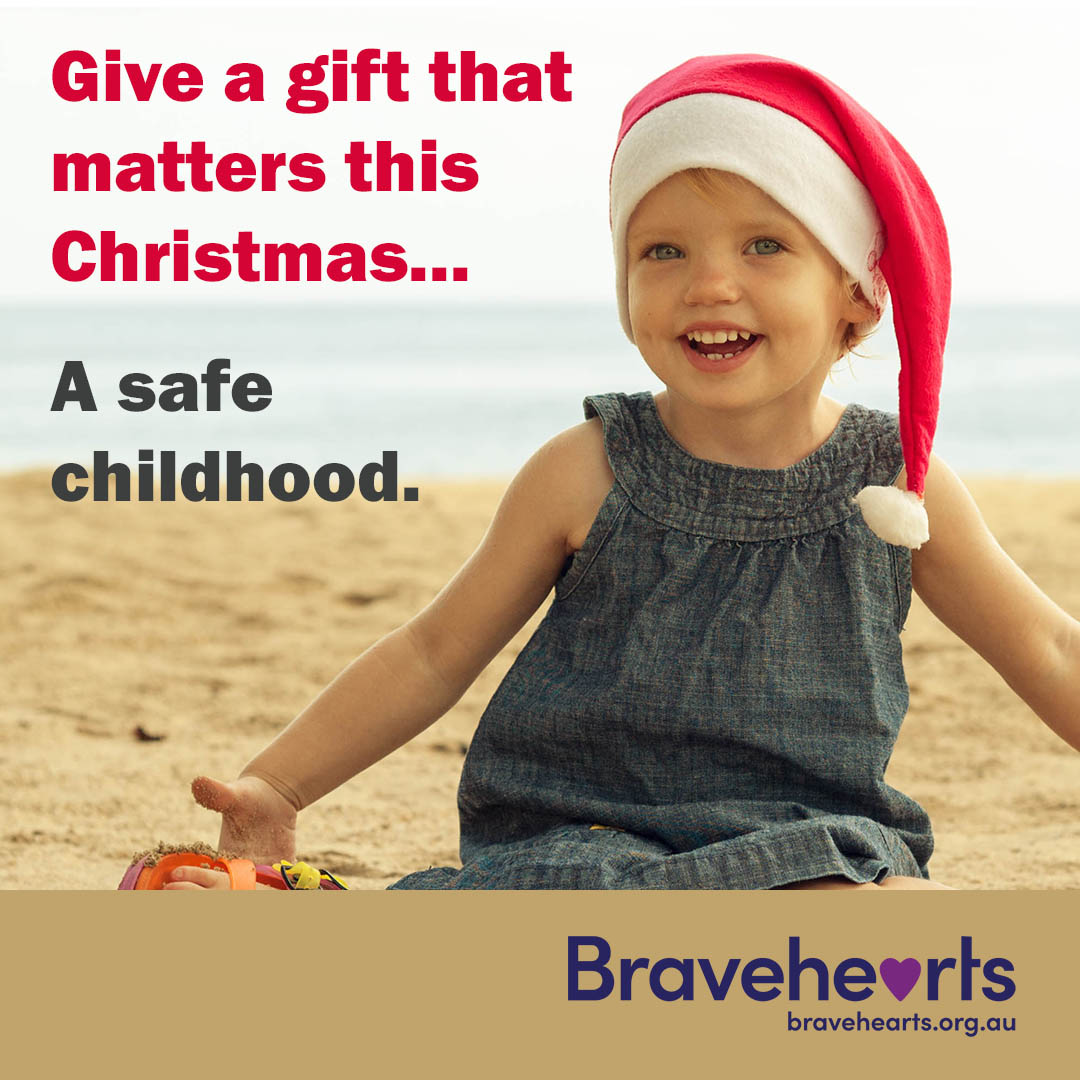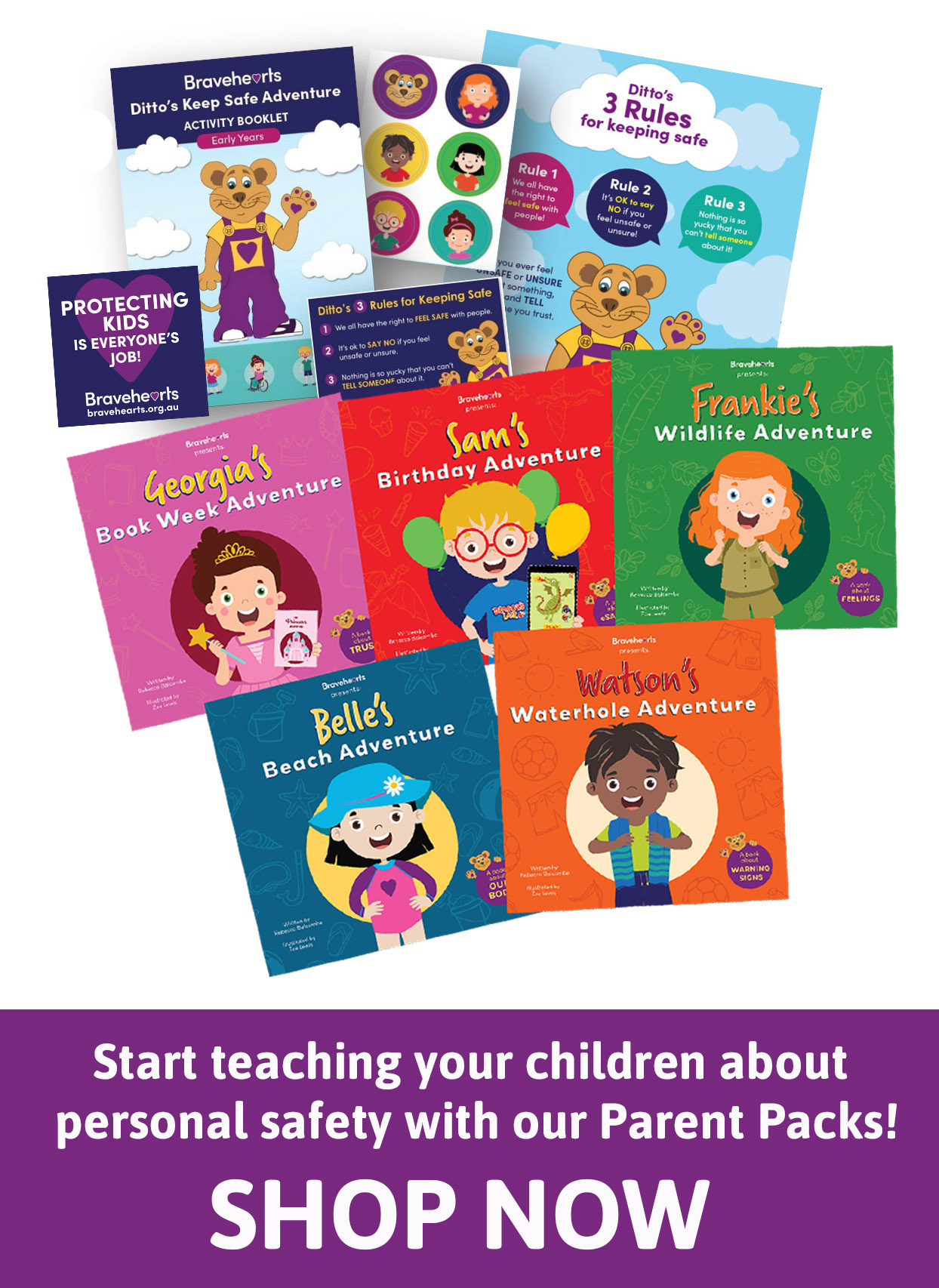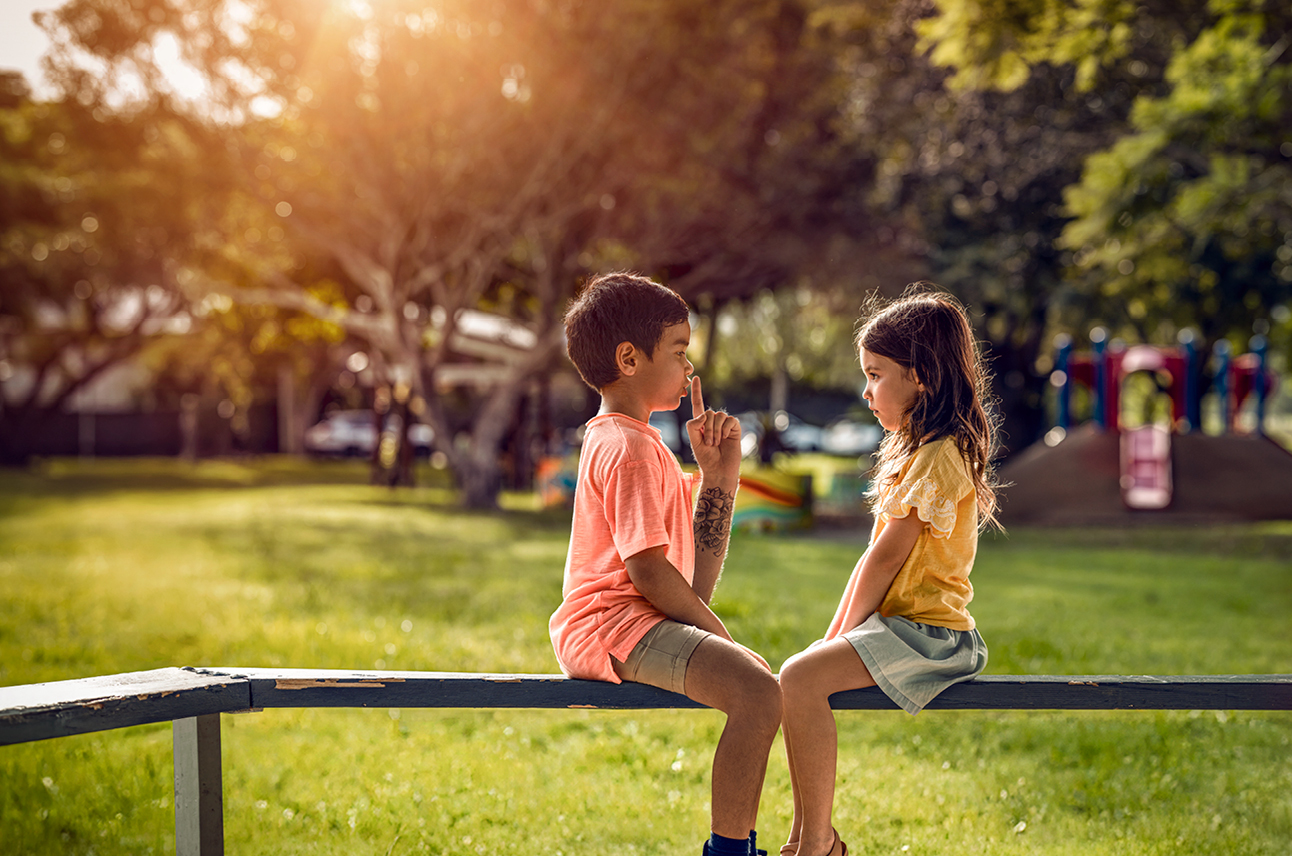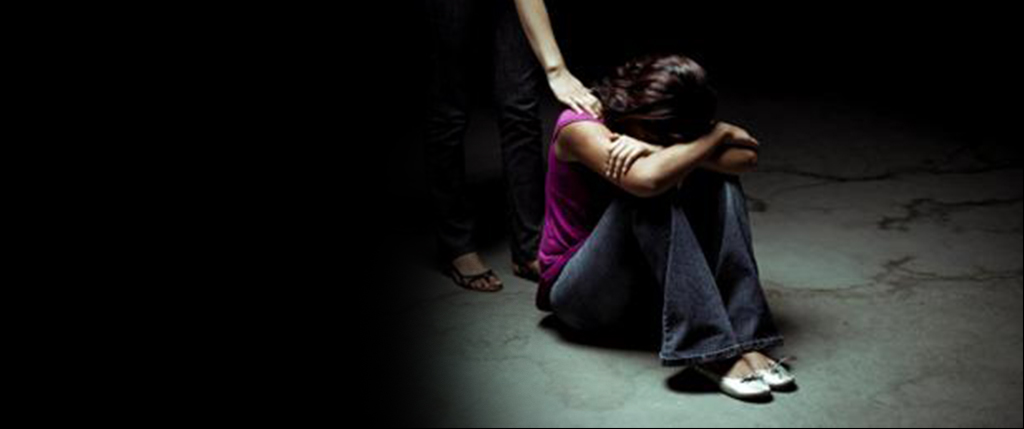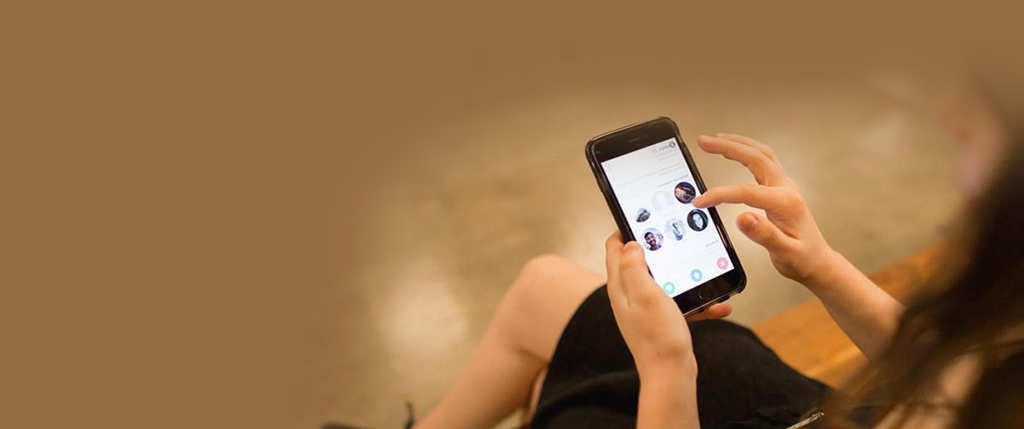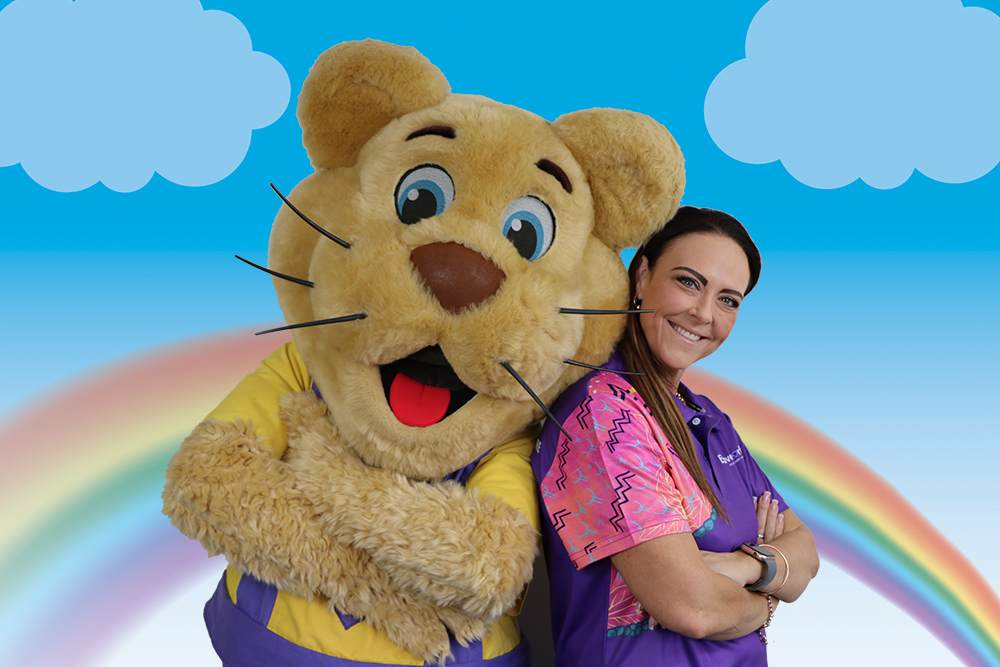About Child Sexual Abuse
- Free Resources
- What is Child Sexual Abuse?
- What are the Signs of Child Sexual Abuse?
- What are the Effects of Child Sexual Abuse?
- What is Grooming?
- What is Consent?
- Sexual Behaviours in Children
- Myths About Child Sexual Abuse
- Online Grooming & Child Sexual Exploitation
- Teaching Children Personal Safety
- Responding to a Disclosure of Sexual Abuse
- Historical Child Sexual Abuse
Helpful Links
- Home > About Child Sexual Abuse > What is Grooming?
What is Grooming?
Learn the signs of grooming and protect children from child sexual abuse.
Grooming describes the preparatory (or ‘lead up’) stage of child sexual abuse that offenders use to gain the trust and compliance of the child or young person (and those around them) and to establish secrecy and silence to avoid disclosure. Grooming may occur in person (contact grooming) or online.
Grooming hides behind harmless
It is essential to understand that it is not just the child or young person that is groomed. Parents, caregivers and other significant adults (including organisations) can also be groomed by the person intending to sexually harm the child. This can make it challenging for parents and caretakers to establish if a child is being groomed, as grooming behaviours often look similar to genuine or caring behaviours.
Perpetrators are often seen as upstanding, likeable and charming, taking the time to build the trust of the child and adults around the child. This process can take weeks, months or even years, but the end goal is always the same – to gain unsupervised access to the child for the purpose of sexually abusing them and keeping them from disclosing.
Protecting Children and Young People from Sexual Abuse: DOWNLOAD OUR FREE PARENT GUIDE NOW
Most offenders are known to the child and/or the family, with 79% of child sexual abuse survivors reporting they were abused by a relative, friend, acquaintance or neighbour (Australian Institute of Health and Welfare, 2019, as cited in National Office for Child Safety, 2021). Whilst most people are safe and do not pose a risk, we should be tuned into the behaviours of those who spend time with our children and learn to recognise behaviours that could be considered grooming ‘red flags’.
Learn the signs: ‘Red Flag’ grooming behaviours
It can be difficult to detect sexual grooming because many grooming behaviours resemble normal adult-child interactions (Jeglic, Winters & Johnson, 2023). However, there are common patterns of behaviour among offenders that may help us recognise when a child is potentially being groomed. While red flags may not necessarily mean a child is being groomed, being aware of these ‘red flag’ behaviours can help parents, caretakers and organisations interrupt and even prevent the grooming process.
The table below identifies stages of sexual grooming and the associated characteristics and behaviours or ‘red flags’ (adapted from the Sexual Grooming Model, Winters & Jeglic, 2022). Note that this list is not exhaustive, and these stages and behaviours relate to contact (in-person) grooming. See Online Grooming and Child Sexual Exploitation for information specific to online grooming.
Sexual Grooming Stages & Red Flags
Perpetrators may seek out children who are:
- Compliant and trusting of adults
- Unconfident and lacking in self-esteem
- Lonely, isolated and/or lacking in adult supervision
- Have an intellectual impairment or personal care needs
- Not close to primary caregivers or the family unit
It is important to understand that ALL CHILDREN are at risk of being groomed or sexually abused, no matter their family circumstances, or cultural or socio-economic background.
Perpetrators may:
- Be involved in youth-serving organisations
- Manipulate family to gain access to the child
- Engage in activities alone with children and exclude adults
- Encourage and engage in overnight stays and/or outings with the child perhaps under the guise of helping families out
- Separate the child from peers and family
Perpetrators may:
- Be charming/nice/likeable
- Have ‘insider’ status/good reputation/be a ‘pillar of the community’
- Be affectionate and loving
- Give the child special attention
- Show favouritism/have a ‘special relationship’ with the child
- Give compliments
- Spend time with child/communicate often
- Engage in childlike activities (e.g., stories, games, sports, music)
- Give rewards/privileges (e.g., gifts, toys, treats, money, trips)
- Provide drugs and/or alcohol to the child
Perpetrators may:
- Ask questions about the child’s sexual knowledge/experiences/relationships
- Talk about sexual things they themselves have done
- Use inappropriate sexual language/tell dirty jokes
- Teach the child sexual ‘education’
- Accidentally’ touch the child/use distraction while touching
- Watch the child undressing
- Expose their naked body to the child
- Show the child pornography
- Use ‘innocent’/non-sexual contact
- Desensitise the child to touch/increase sexual touching
Perpetrators may:
- Tell the child not to tell anyone what happened
- Encourage secrets
- Say things such as, “I love you/you’re special”
- Use rewards/bribes/threats of punishment or harm
- Persuade the child it was acceptable/normal behaviour
- Make the child feel responsible
- Use threats of abandonment/rejection/family breaking up
5 Stages of Grooming & Red Flags: DOWNLOAD QUICK REFERENCE SHEET
How grooming impacts victims
The manipulative nature of grooming can cause victims to experience ongoing thought distortions, self-identity issues, and feelings of isolation. Children who have been sexually groomed and/or abused may feel confused, scared and guilty. In some cases, victims may simultaneously feel a ‘bond’ with their abuser and feel protective of their relationship.
When a child is being sexually groomed, they may:
- think they have a special relationship with the person who is grooming/harming them
- feel confused over the nature of their relationship with the perpetrator
- internalise the abuse as their fault/feel responsible for the abuse
- fear they will be blamed, punished, or not believed if they disclose the abuse
- fear that they will be separated from their family or home if they speak out
- believe that disclosure will cause harm to someone or something they love and care for, such as family members or pets.
These complicated and often contradictory feelings, coupled with the fact that perpetrators are often beloved family members, close family friends, or authority figures, contribute to the victim’s silence and unwillingness to disclose, sometimes even when asked directly if they have been harmed.
Protecting children from grooming and sexual abuse
Parents, caregivers and organisations can take proactive steps toward protecting children and young people from grooming and sexual abuse. If you are reading this, you have already taken one of the most important steps – learning more about the issue!
Learn more about Bravehearts’ personal safety education program, Ditto’s Keep Safe Adventure
Understanding how sexual predators select their victims and manipulate those around them helps us better understand how we can build layers of protection around our children.
There is no ‘silver bullet’ when it comes to prevention. Child protection is a joint effort from all those in a child’s life, including not just parents and immediate caregivers, but those working with and around that child, such as carers, teachers, and community leaders.
Protective steps parents and caregivers can take:
Arm yourself with as much knowledge as you can about recognising and responding to child sexual abuse. The more you understand the issue, the better placed you will be to spot any warning signs, red flags or suspicious behaviour.
Learn what to do if your child (or a child you know) discloses abuse or grooming behaviours to you. Children who are believed and have parents/caretakers who take immediate protective actions may experience reduced trauma effects. It is also important to know where and how to report child abuse or suspected abuse.
It has long been known that sex offenders seek out vulnerable children who have poor parental relationships, are socially isolated and have emotional insecurities (Jeglic, Winters & Johnston, 2023; Finkelhor & Baron, 1986; Fleming et al.,1997). Talking with your children and keeping non-judgmental open lines of communication is one of the most powerful ways parents and caretakers can protect their children from grooming and sexual abuse (Jeglic, Winters & Johnston, 2023).
Teaching children personal safety (also known as protective behaviours) strategies can help them build confidence and resilience and keep them safe. Whilst the onus of protection should always be on the adults in a child’s life, the reality is that parents and caregivers cannot supervise their children 24/7. Empowering children with personal safety knowledge can reduce their vulnerability to grooming and abuse.
Personal safety education includes things such as body ownership, consent, identifying safe and unsafe feelings, and safety networks. Personal safety can be taught to children as young as pre-school age and should be an ongoing conversation between children and primary caregivers rather than a one-off.
Learn more about Bravehearts’ personal safety education program, Ditto’s Keep Safe Adventure
Whilst many schools now incorporate elements of personal safety education into the curriculum, these lessons are not always sufficient. Personal safety education needs to be consistent and repetitive, so it becomes part of a child’s understanding of themselves and the world around them.
There are many excellent resources available to help get you started with teaching your child personal safety. Bravehearts’ Parent and Carer’s Guide includes tips and activities and can be downloaded free from the Bravehearts website. See also our list of recommended story books about personal safety for young children and our online shop, where you can purchase personal safety resources.
Organisations working with children should adhere to the National Principles for Child Safe Organisations or State or Territory child-safe standards. Ask your child’s school or early learning centre questions about their child protection safeguards. What policies and procedures do they have in place to keep the children in their care safe?
Bravehearts has a list of 5 key questions you have the right to ask of any service, organisation or institution where your child spends time. Use this as a guide to ensure your child is being kept safe whilst not in your care.
Learn more about Bravehearts’ Online Child Protection Training Courses for Educators and Organisations
In Bravehearts’ personal safety program, Ditto’s Keep Safe Adventure, we teach young children to ‘listen’ to their feelings and the ‘warning signs’ their body gives when something or someone doesn’t feel safe, and that it’s ‘ok to say “no” if something doesn’t feel right’. Parents and caregivers should understand this too!
When it comes to your child’s safety, always go with your ‘gut feeling’. If someone in your child’s life or a situation doesn’t ‘feel’ right or seems ‘off’ to you, trust your protective instincts. This may mean you express your concerns to that person, speak to a supervisor or manager, seek advice from a child protection agency, such as Bravehearts, or speak with law enforcement.
This also goes for when something feels ‘off’ about your child (or even a child you know). If they are behaving out of character or showing potential signs of abuse, trust your instincts and explore potential reasons behind their behaviour.
We can’t spend our lives suspicious of every single person in our child’s life, but we can be vigilant. We are vigilant when it comes to road safety, ensuring we teach our children how to safely cross, and holding their hands when they are small; being vigilant with their personal safety is simply an extension of this protective behaviour.
Look closely at those who spend time with your child, particularly those who spend time alone with them. Do not be afraid to question any behaviours that could be considered ‘red flags’ for grooming or abuse.
Remember that in up to 90% of child sexual abuse cases, the offender is known to the child and family, so do not presume that any potential threats will only come from the outside.
What to do if you suspect your child is being groomed or sexually abused
Grooming and child sexual abuse are criminal offences. If you suspect your child is being groomed, or sexually abused, or your child has disclosed harm, report to the Police or relevant authorities in your state.
If you are unsure or need support, contact Bravehearts’ Information and Support Line on 1800 272 831 or bisl@bravehearts.org.au. Our Support Line is open Monday to Friday (8:30am – 4:30pm AEST) and our trained staff is here to listen and provide guidance.
 BACK
BACK
